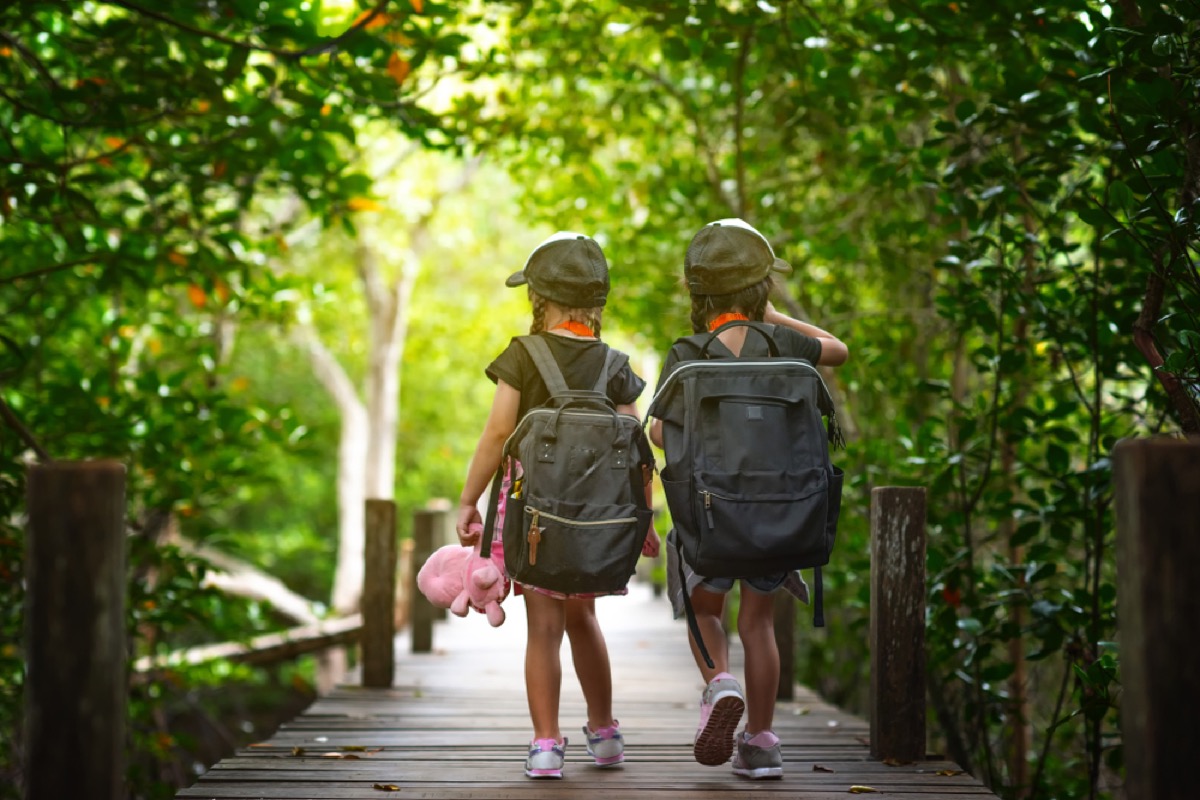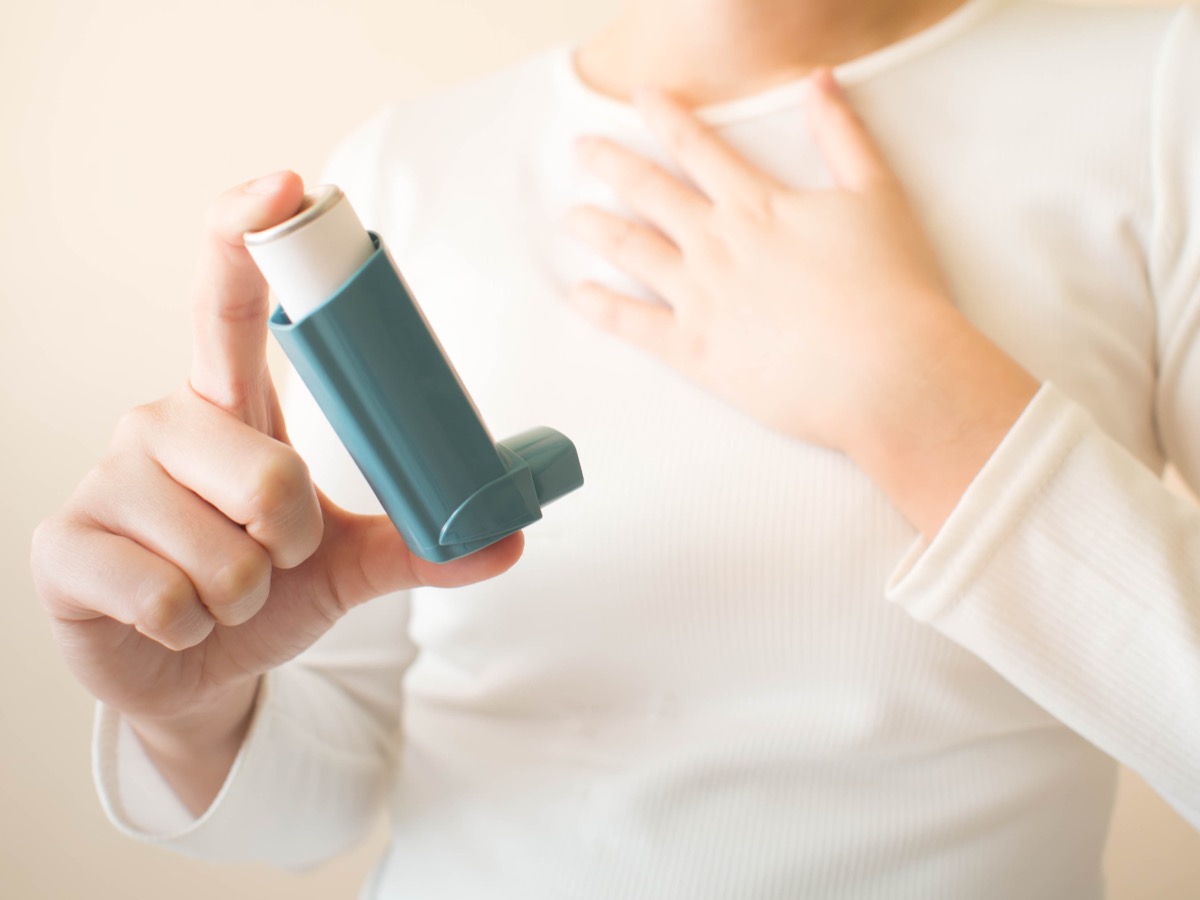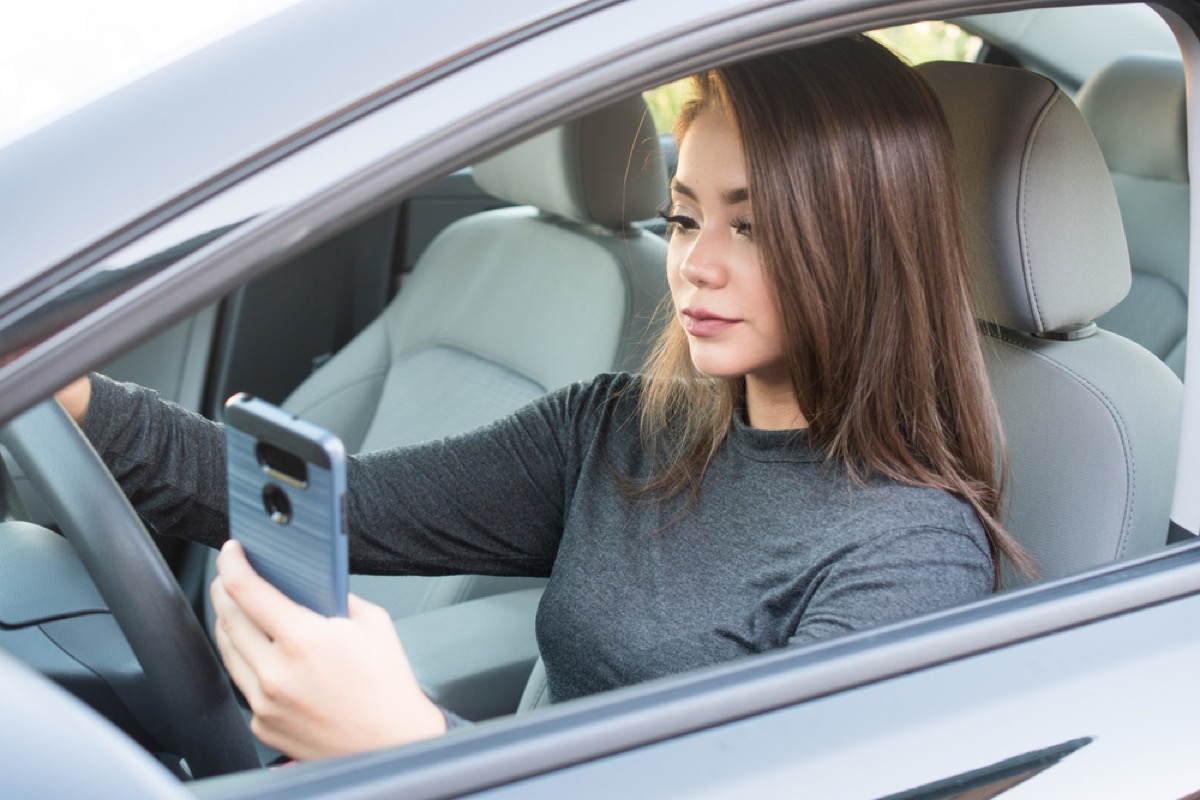27 Ways Today’s Parents Have it Harder Than Any Other Generation

Parenting has never been an easy feat. It’s expensive, it’s time-consuming, and, in many cases, it leaves you with pureed mangoes in your hair after a long workday. And despite certain modern conveniences like having diapers overnighted to you from Amazon or having groceries shipped to your door at the touch of a button, a 2019 poll from the BPI Network found that 88 percent of parents believe that childrearing is harder for them than it was for their parents.
So, what’s making parenting such an onerous endeavor? From the uptick in certain diseases to having to maintain constant vigilance against what’s lurking on the internet, read on to discover the ways parenting is harder for today’s moms and dads.
1
More parents are working than ever before, but still have little parental leave.

Unfortunately for working parents, the United States is the only developed country in the world without national paid parental leave—and unlike half a century ago, the rising cost of raising children is making it harder for families to have a parent stay home. In fact, in 1970, just 30 percent of families had two working parents, while in 2015, that number reached 46 percent. What’s more, the number of households with a working father and stay-at-home mother dropped from 46 percent to 26 percent over the same period, while homes with full-time working moms and stay-at-home dads only increased by 4 percent, according to the Pew Research Center.
2
Childcare and early education are eating up more of parents’ budgets than ever before.

Childcare has never been cheap, per se, but there was once a time when it wasn’t the major financial strain it is today. According to the USDA’s Expenditures on Children by Families Report, the average American family spent 16 percent of their budget on childcare in 2017, while families in 1960 spent just 2 percent of their earnings on the same expense.
3
A lack of parental supervision is being increasingly criminalized.

Thirty years ago, it wasn’t uncommon for parents to say things like, “Just stay in the car while I run into the store for a minute,” or, “Go walk the dog.” Now, both of those things can get you arrested.
In 2018, for instance, the police were called on a suburban mother when she let her 8-year-old daughter take the family dog for a walk alone. And it’s illegal to leave your child alone in the car for even five minutes in many states.
4
Public school funding is being depleted.

Public schools in 25 states have been underfunded by as much as $19 billion over the past decade, according to the American Federation of Teachers. Believe it or not, there was a time when you could send a kid to school without wondering, “I wonder if they’ll have books. Or desks.”
5
Recess is becoming shorter and shorter.

A few decades ago, parents didn’t have to worry about their kids getting enough physical activity during the day because recess was built right into their school schedules. Today, however, that daily exercise isn’t guaranteed. According to a 2017 report form The Council of State Governments, only five states have requirements regarding recess at all.
6
After-school activities have become non-negotiable.

What did kids do after school 30 years ago? Most parents had no clue—and that was totally fine. But today, parents are expected to curate every moment of their child’s life. If they’re not in school, children are expected to be in art classes, attending music lessons, or at other activities that will look good on a college application. It’s exhausting, and it can leave parents with knots in their stomachs, worrying that they’re just not doing enough.
Worse yet, it can leave them with a seriously depleted bank account: According to the 2016 Huntington Backpack Index, the cost of supplies and extracurricular activities hit $1,498 on average for high school students, up 6.8 percent from the previous year.
7
School shootings have risen sharply.

Even if the odds are against a school shooting ever happening at your child’s school, the statistics are enough to keep any parent up at night. A 2018 report from the Journal of Child and Family Studies found that more people have been killed in school shootings over the past 18 years alone than in the entire 20th century. And even in unaffected communities, the stress that comes with worrying about school shootings is having a major impact on parents; in a 2018 Gallup poll, 35 percent of parents expressed concerns about their kids’ safety at school.
8
College costs have skyrocketed.

While having a four-year college degree is a requirement for many white collar jobs today, affording those tuition bills is getting harder and harder for parents. According to CollegeBoard’s Trends in College Pricing report, in the 1987-1988 school year, the price of a four-year nonprofit college—including tuition, fees, room, and board (adjusted for inflation)—was $22,490; in the 2017-2018 school year, those same education expenses cost an average of $46,950.
9
Wages have stagnated.

With the ever-increasing costs of everything from housing to college, one would hope that wages would have risen accordingly over the years, but that’s hardly the case in the U.S. In fact, according to a 2017 review of research published in Science, 92 percent of individuals born in 1940 were making more than their parents, while just 50 percent of people born in 1984 out-earned the generation before them. Translation: It’s a whole lot harder to afford all those essentials associated with childrearing.
10
Kids are getting more screen time than ever before.

These days, children are able to access any show they could ever imagine simply by pressing a button. Whether they’re watching on their computer, a tablet, or a phone, there are virtually endless methods of vegging out in front of a screen, which is causing them physical and mental health issues.
And it’s getting worse and worse by the year. According to a 2019 report in JAMA Pediatrics, young kids are getting significantly more screen time today than they were just over 20 years ago. In 1997, kids two and under were getting an average of 1.3 hours of screen time a day; today, that same demographic is getting some 3 hours.
11
It’s easier than ever for predators to gain access to your kids.

A predator back in the 20th century didn’t have so many advantages from a technological standpoint. But online, anyone can be anyone, and a child might not realize that they’ve been corresponding with a full-grown adult until it’s too late. According to a 2014 report from University of New Hampshire’s Crimes Against Children Research Center, 1 in 11 children reported receiving an unwanted sexual solicitation online in the past 12 months as of 2010.
12
Too many photos of kids online are creating disconnect in parent-child relationships.

Ask any parent to see a photo of their kid, and they’ll scroll through hundreds—if not thousands—of photos on their phone. However, being your child’s personal paparazzi might be more damaging than you realize. A 2013 study published in the journal Psychological Science even suggests that it can even alter memories, causing a “photo-taking-impairment effect” that can cause lasting feelings of disconnect. And, of course, when those moody teenage years come around, odds are your kids won’t be feeling so thrilled about those pictures of them in the bathtub at two being out there for everyone to see.
13
Kids have more access to adult content than ever before.

Three decades ago, curious kids might’ve searched for an actual issue of Playboy hidden somewhere in their house. Today, though, pornography has never been more accessible, and kids can find it almost anywhere. In fact, according to a 2008 study conducted at the University of New Hampshire, 93 percent of male students and 62 percent of female students said they’d seen pornography before they turned 18.
14
STI rates in adolescents are on the rise.

Maybe it’s a lack of sex education in schools or maybe it’s the lack of campaigns aimed at fighting AIDS that were prominent throughout the ‘80s and ‘90s—but either way, rates of sexually transmitted infections are on the rise among adolescents. According to a 2019 review of research in Current Opinions in Pediatrics, STI rates have been steadily increasing among people aged 15 to 24 since 2014, and that group—despite making up only a quarter of the U.S. population—now accounts for nearly half of the new STI diagnoses each year.
15
Childhood obesity rates are skyrocketing.

In just 30 years, obesity has doubled in children and quadrupled in adolescents. In fact, according to the CDC, one in every five kids is technically obese.
“Children are now taking the same type of medications as their parents to manage blood pressure, diabetes, and cholesterol,” a spokesperson for the American Heart Association said in an interview. So, in addition to making sure kids brush their teeth and get dressed every morning, parents now also have to pester them to take their blood pressure meds.
16
More kids are developing asthma.

While asthma has long been a common childhood ailment, the number of children developing the condition in recent years is cause for concern. According to the Centers for Disease Control and Prevention (CDC), in 2001, 1 in 14 people had asthma—and as of 2009, that number was up to 1 in 12. Among black children, those rates have risen even more dramatically—up 50 percent within the same time frame.
17
Nut allergies are on the rise.

Growing up, we all knew that one kid in school with a nut allergy because he or she was unique. However, that’s not the case anymore. According to a 2010 report published in the Journal of Allergy and Clinical Immunology, cases of peanut and tree nut allergies have tripled among U.S. children in the past decade. Nut allergies are so common, in fact, that many schools require students to leave any nut-based products at home.
And that’s not the only struggle for parents and kids alike. As nut allergies rise, so too does the cost of the medication that can keep them at bay. An EpiPen—the one thing that can save a child’s life during anaphylaxis, or a fatal allergic reaction to peanuts—has seen a price hike of 400 percent in recent years, with many two-packs costing upwards of $600.
18
Certain childhood cancers are on the rise.

Being a parent is scary enough without having to worry about serious illness—and yet, more and more parents are finding themselves dealing with cancer diagnoses in their kids than ever before. According to a 2019 review of research published in JNCI Cancer Spectrum, there was a noticeable increase in neuroblastoma, acute myeloid leukemia, hepatoblastoma, and ependymal tumors among children under 5 between 1988 and 2012.
19
Kids are developing super lice.

It’s a rite of passage for parents of elementary school-age kids to comb through their children’s hair, looking for those pesky parasites. It’s annoying, but eminently treatable—or at least it was, until recently. Nowadays, there are genetically mutated head lice that are resistant to traditional treatments. According to one 2016 study published in the Journal of Medical Entomology, these so-called “super lice” have been found in 48 U.S. states. Eek!
20
Preventable diseases are on the rise again.

Back in 2000, parents could breathe easy knowing that measles had been eliminated in the United States. Cut to 2019, and we’ve got this highly preventable disease making the rounds once again. The CDC reports that there have been 1,148 cases of measles in 30 states so far in 2019, so be careful about where your kids are hanging out.
21
Kids can buy energy drinks at any store—with potentially dire consequences.

Fifty years ago, encountering a kid drinking shot after shot of espresso would have been such a perplexing sight that it might have ended up as a front-page story in the local paper. However, today, kids have easy access to something even worse: energy drinks. These energizing elixirs often contain far more caffeine than is safe for most people, especially youngsters. In a 2017 study published in Pediatric Emergency Care, 40 percent of participants between the ages of 13 and 19 reported adverse effects after consuming an energy drink, including heart palpitations, insomnia, headaches, chest pain, digestive distress, shortness of breath, and even seizures.
22
Kids are vaping at record rates.

Twenty years ago, vape pens and e-cigarettes simply didn’t exist. However, today’s parents can count vaping among the many concerns they have about their kids’ wellbeing. According to a 2018 report from the National Institute on Drug Abuse, 37.3 percent of high school seniors admitted to vaping in the past year alone, up from 27.8 percent in 2017. And we’re only just starting to understand the effects this habit can have on one’s health.
23
Legal marijuana is giving rise to new concerns about adolescent drug use.

Recreational marijuana is now legal in 11 states, and medical marijuana is legal in 33. “But wait,” you say, “they can’t buy marijuana in those states without being over 21. And for medical marijuana, they’ll need a note from their doctor.” Well, you also have to be 21 to purchase alcohol, and that’s never stopped underage kids from getting it.
24
Fewer kids are getting driver’s licenses.

While parents could once rely on their kids being relatively independent by the time they hit 16, that’s not necessarily the case anymore. According to 2016 research from the University of Michigan Transportation Research Institute, in 1984, 46 percent of 16-year-olds in the United States had driver’s licenses—but in 2014, that number was down to just 25 percent. If your child doesn’t have a license, you can’t ask them to pick up something on the way home, drop off their sibling at a lesson, or spend your Saturday night doing anything other than shuttling them to friends’ houses.
25
Kids are texting and driving with shocking frequency.

Texting and driving is a serious concern amongst those teenagers who do have their driver’s licenses. Eleven teenagers die every day from texting and driving, and teens are four times more likely than adults to get into a serious or fatal accident while texting and driving.
Even if you’ve told your kids about the risk of texting and driving a million times, that doesn’t mean the message is necessarily getting through. A 2018 review of research published in the Journal of Adolescent Health found that among more than 101,000 high school students aged 14 or over who’d driven a car in the past 30 days, 38 percent had texted while driving on at least one occasion.
26
Cyberbullying is an ever-present threat.

With Snapchat, Instagram, and Facebook, bullies have an increasingly wide array of ways to torture their victims—all without ever having to see them face-to-face. In a 2018 report from the Pew Research Center, 59 percent of teens reported being cyberbullied, with 16 percent of that population being on the receiving end of physical threats.
27
Parents are constantly competing with one another online.

Sure, you may have had some insight into who was living the good life back in the day based on the cars your friends drove or the houses they lived in, but today’s parents have to deal with a stress-inducing onslaught of people’s lavish lifestyles playing out in real time on social media. In fact, in a survey conducted by the Priory Group, a mental health care facility provider, 22 percent of parents surveyed said that seeing other people’s happy posts about their children made them feel inadequate, and 23 percent of parents said that those same posts made them depressed. And for more ways parenting is different now, check out these 50 Ways Parenting Has Changed in the Last 50 Years.
To discover more amazing secrets about living your best life, click here to follow us on Instagram!